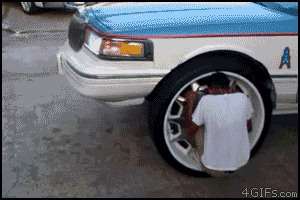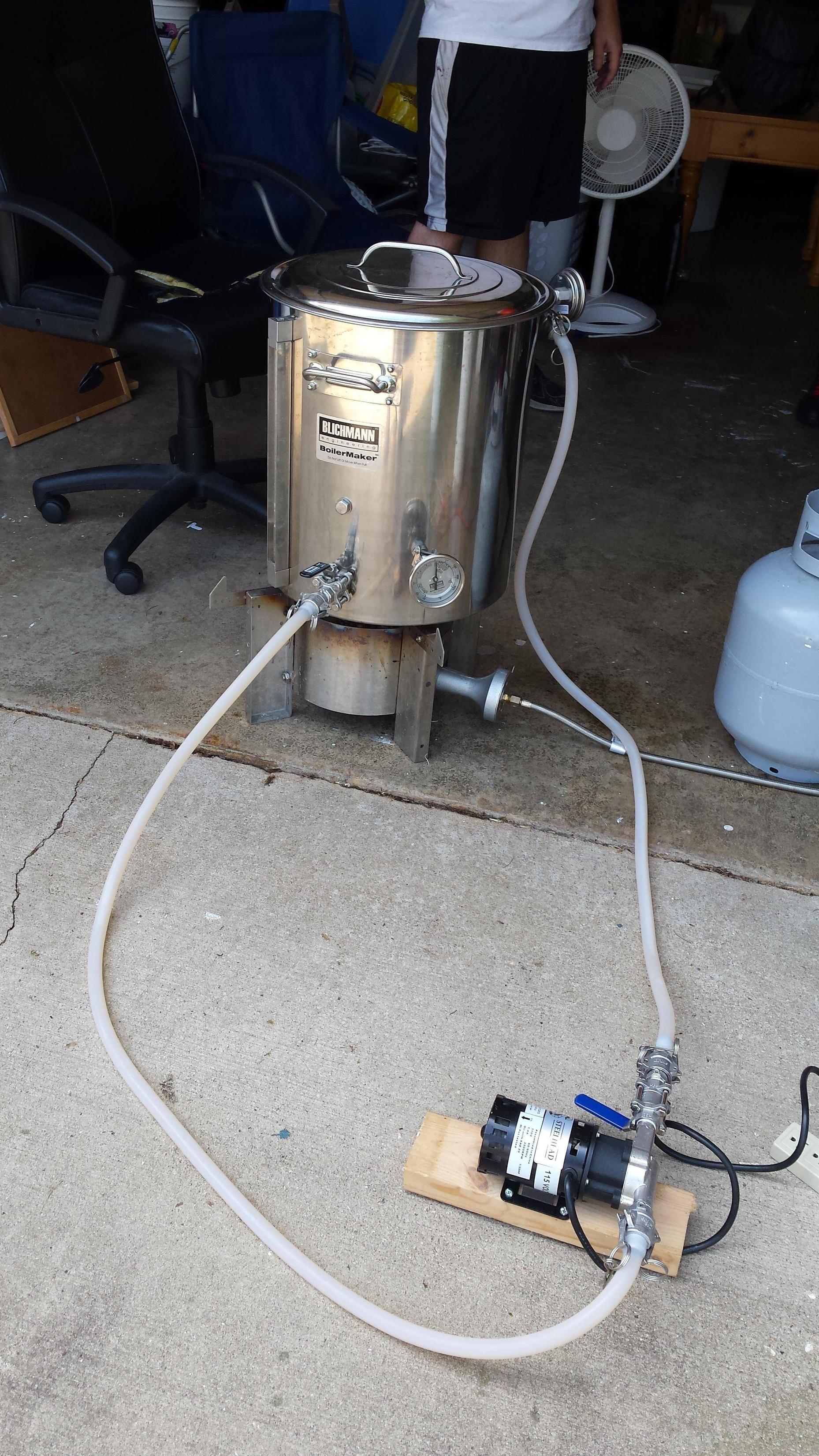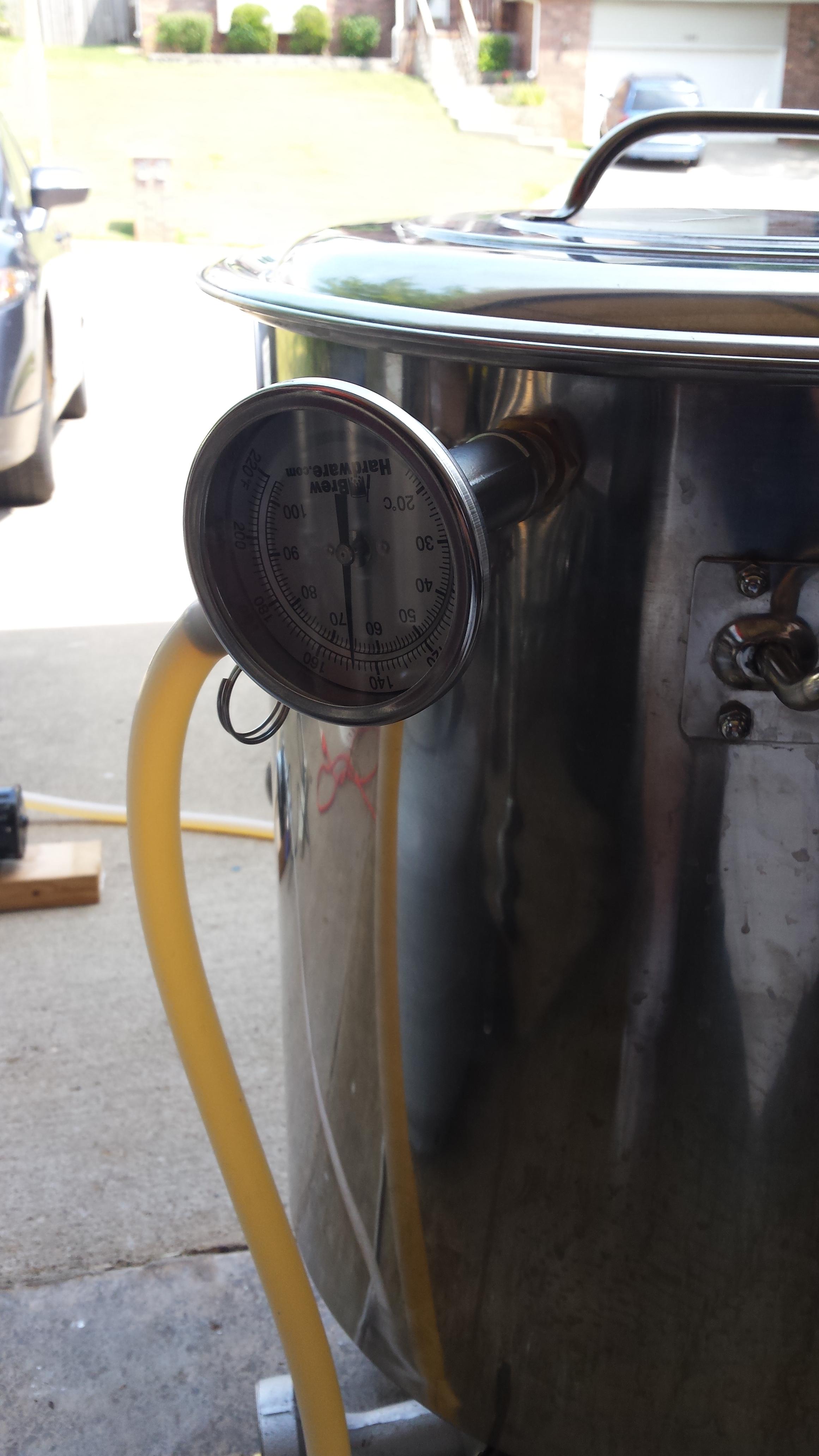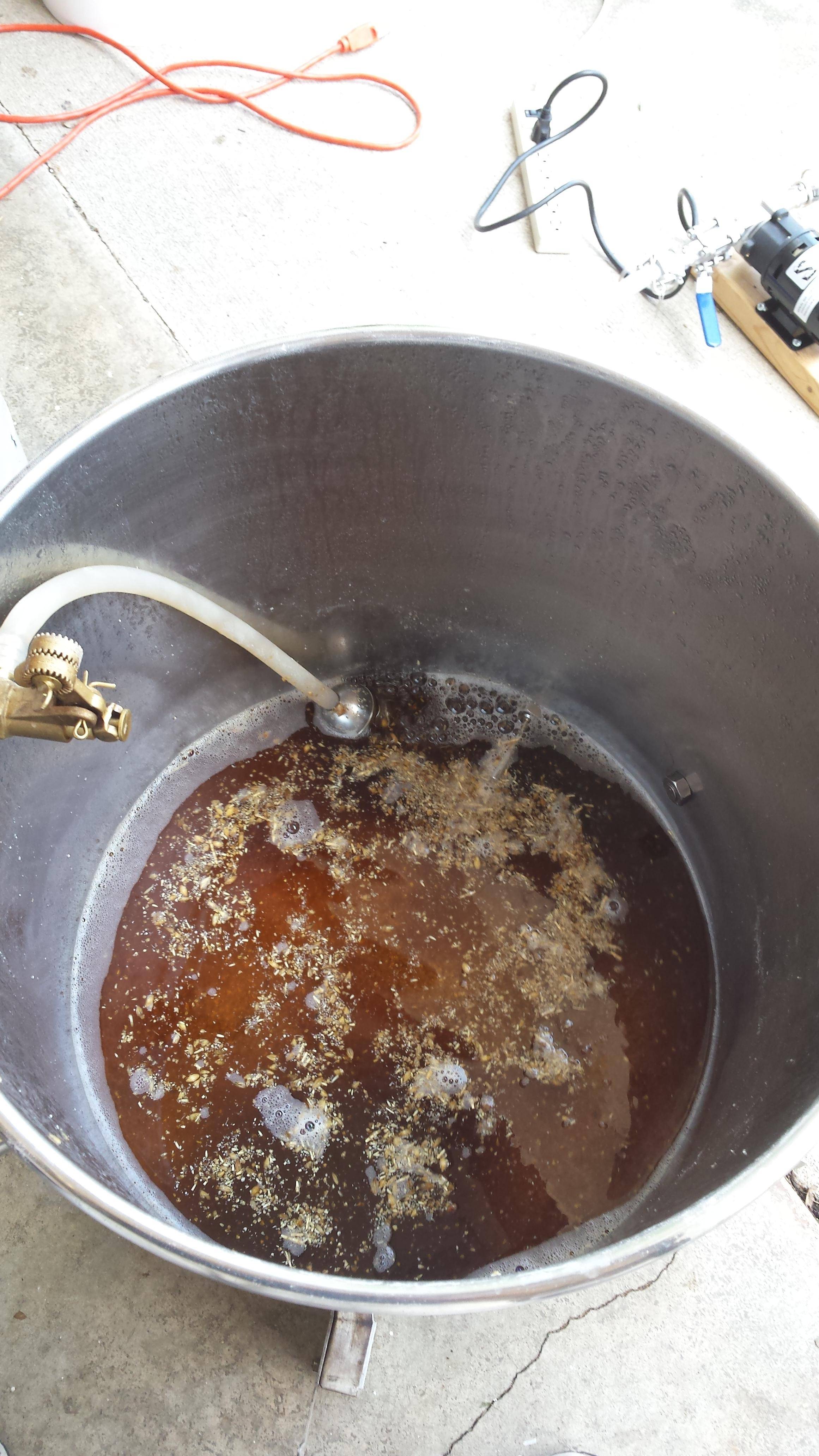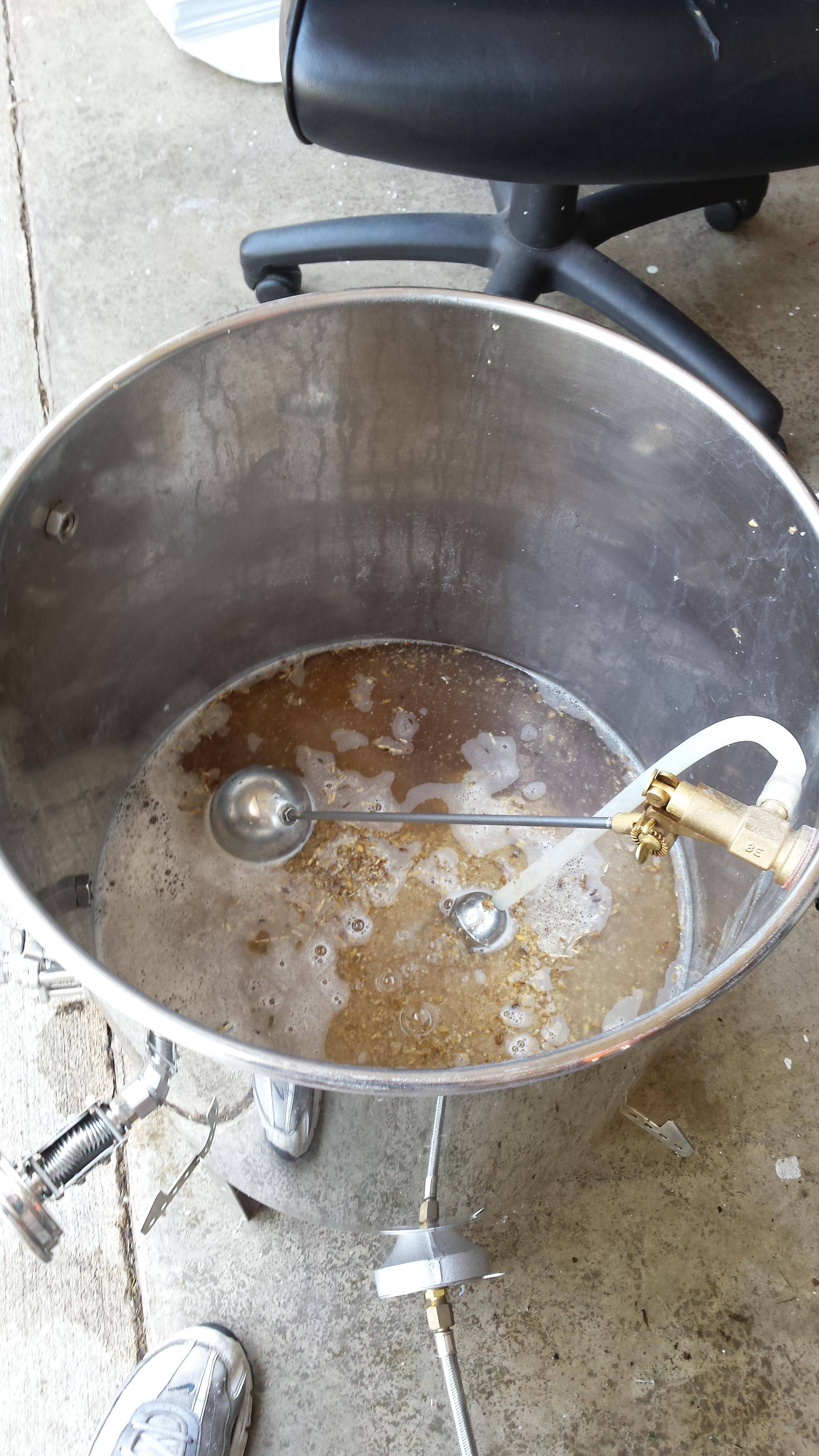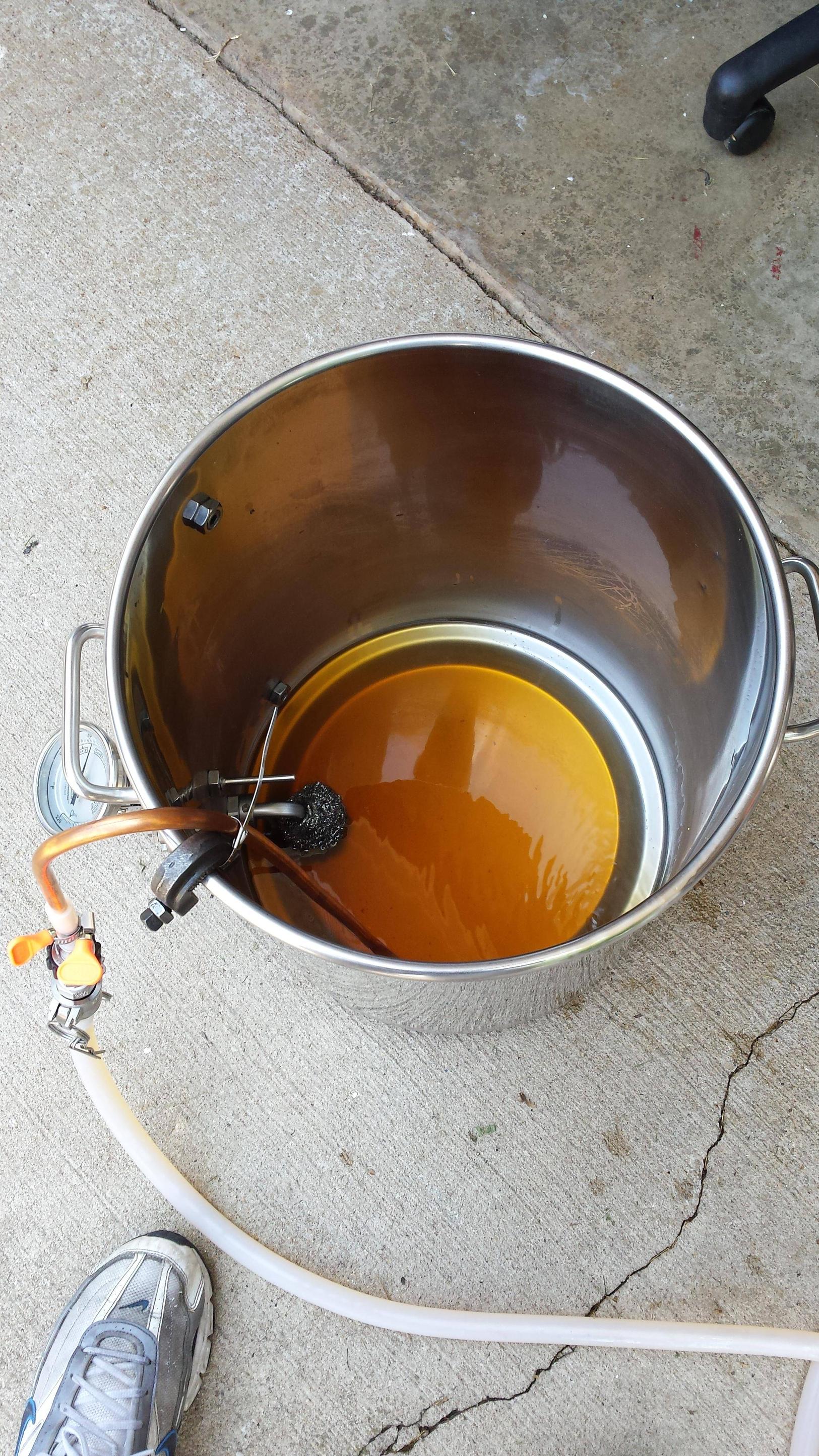justforrazors
Well-Known Member
Hey all, I'm in the process of revamping my mashing system as I've gotten sick of the difficulty involved with step mashing from infusion in a ten gallon cooler. Just wondering about feedback from people who run a similar style system- how do you like it, any drawbacks, things you would change, etc.
I have a 15 gallon blichmann brewpot with a false bottom and autosparge. What I've designed is a direct fire system using a march pump to recirculate the wort in order to keep consistent temperatures throughout the mash and to prevent super heating any one portion of the mash. For right now, I'll just be using the one brewmometer for temperature readings, but eventually plan on expanding to a PID unit with multiple in line probes that connect to an autostart for the burner (turning it on/off as needed) to fully automate the system. I like that I'll have plenty of options for further upgrading the system, but won't necessarily need to in order for the system to run efficiently.
So, questions:
For those running a similar setup, have you had problems with scorching grains, overheating, or temperature stability?
If you ran a cooler mash previously, how does the clarity and efficiency differ between the two? My understanding is that the constant re-circulation is supposed to help with both, but I'd love some firsthand feedback.
Finally, any suggestions for improving the design? It is currently pretty straightforward and should only cost about $250-300 for the first steps I want to take, and seemed like it would be better for step mashing than a true RIMS or HERMS system. Just wondering if I'm missing anything huge here, or If I could improve further without dumping too much money into it.
I have a 15 gallon blichmann brewpot with a false bottom and autosparge. What I've designed is a direct fire system using a march pump to recirculate the wort in order to keep consistent temperatures throughout the mash and to prevent super heating any one portion of the mash. For right now, I'll just be using the one brewmometer for temperature readings, but eventually plan on expanding to a PID unit with multiple in line probes that connect to an autostart for the burner (turning it on/off as needed) to fully automate the system. I like that I'll have plenty of options for further upgrading the system, but won't necessarily need to in order for the system to run efficiently.
So, questions:
For those running a similar setup, have you had problems with scorching grains, overheating, or temperature stability?
If you ran a cooler mash previously, how does the clarity and efficiency differ between the two? My understanding is that the constant re-circulation is supposed to help with both, but I'd love some firsthand feedback.
Finally, any suggestions for improving the design? It is currently pretty straightforward and should only cost about $250-300 for the first steps I want to take, and seemed like it would be better for step mashing than a true RIMS or HERMS system. Just wondering if I'm missing anything huge here, or If I could improve further without dumping too much money into it.


